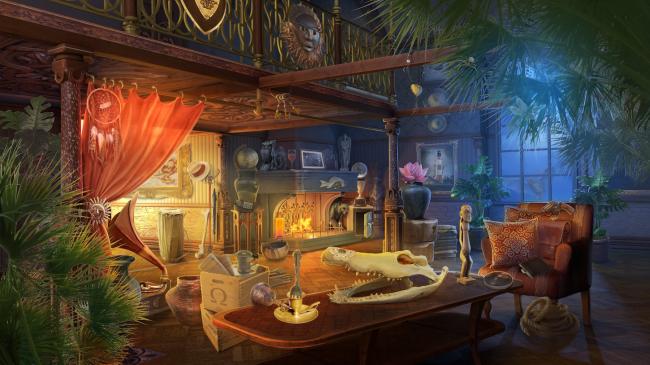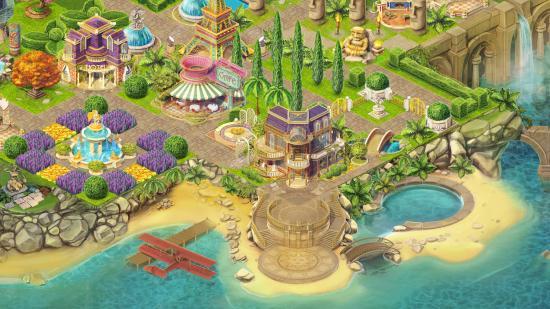- Wondering how to get Monopoly GO! free rolls? Well, you’ve come to the right place. In this guide, we provide you with a bunch of tips and tricks to get some free rolls for the hit new mobile game. We’ll …
Best Roblox Horror Games to Play Right Now – Updated Weekly
By Adele Wilson
Our Best Roblox Horror Games guide features the scariest and most creative experiences to play right now on the platform!The BEST Roblox Games of The Week – Games You Need To Play!
By Sho Roberts
Our feature shares our pick for the Best Roblox Games of the week! With our feature, we guarantee you'll find something new to play!Type Soul Clan Rarity Guide – All Legendary And Common Clans Listed!
By Nathan Ball
Wondering what your odds of rolling a particular Clan are? Wonder no more, with my handy Type Soul Clan Rarity guide.
Pearl’s Peril Review
Pearl’s Peril is the first foray onto the Facebook hidden object scene by wooga, the social games developer of Monster World and Diamond Dash fame. In the game, you play as Pearl, a young female pilot in the bustling 1920s who leaves the life she knows behind to uncover the truth surrounding her estranged father’s alleged suicide, setting off on a harrowing adventure that takes players halfway around the world.

Pearl’s Peril is a shiny pearl of a hidden object game that’s marred by a perilous freemium model.
Pearl’s Peril is the first foray onto the Facebook hidden object scene by wooga, the social games developer of Monster World and Diamond Dash fame. In the game, you play as Pearl, a young female pilot in the bustling 1920s who leaves the life she knows behind to uncover the truth surrounding her estranged father’s alleged suicide, setting off on a harrowing adventure that takes players halfway around the world.
The story of Pearl’s Peril is well-written and captivating at every turn, with a pretty nice element of mystery added in as well. While there’s no voiceover work to be found, a calming ocean ambiance and 1920s soundtrack do more than enough to set the game’s mood.

One thing I found a bit off about the game’s sound, though, is that it completely disappears at regular intervals whenever two characters are discussing something. I can still hear the clicking sound as I scroll through the dialogue, but everything else becomes mute. It really pulls me out of the atmosphere in a negative way. But that’s a minor complaint compared to the poorly used freemium model that restricts the gameplay of Pearl’s Peril at every turn.
The waiting times for constructing new buildings and upgrading existing ones borders on the absurd, with the second structure I purchased requiring 24 hours to build. If I wanted to speed up the process, I had to shell out a whopping 10 game dollars, and there are very little (if any) opportunities to earn more of this currency without paying out of your own pocket.
This wouldn’t be too big of an issue if so many actions in the game didn’t necessitate spending more dollars. 40 game dollars for 10 points of energy is a little extreme, and there’s no leveling up or energy-boosting perks to be found, so you won’t really be left with any other option. Energy will slowly replenish over time, at a starting rate of 1 energy point per 20 minutes, and up to a pitiful maximum cap of 5. The early stages of the game suffer from a lack of side quests to help you along, and it’s really a shame because the freemium model leaves the game’s intriguing story feeling segmented and thinly spread out.

But in the moments where you actually get to play Pearl’s Peril, the game is an absolute blast, and you’ll be blitzing through exciting hidden object scenes like there’s no tomorrow. The game starts out easy enough, with large blatant objects to find like windmills and rainbows. But the more you get accustomed to each different location, from tombs to cliffs and beaches, the more new objects are thrown into the mix, and the more complicated those blitz bonuses are to earn.
The game is broken up into 7 initial chapters, with 5 hidden object scenes to memorize in each, and a bonus adventure scene that leads into new areas of the island opening up the further you progress. Each scene has up to 5 badges to earn based on your cumulative score, and 3 mystery clues to find that will come into play in the chapter’s closing adventure scene. You’ll need to play each setting dozens of times to earn every badge and continue the plotline, but the fast-paced nature of the game makes this seem hardly redundant; and the planned weekly content updates to Pearl’s Peril in a serialized format will hardly leaving players in want of things to do.
Yet while the hidden object scenes in Pearl’s Peril are all sorts of fun, the social city-building aspects leave much to be desired. The idle island setting is lifeless and dull, and the ocean textures don’t even move beyond the immediate coastline. Purchasing new buildings and scenery objects will increase your total prestige, which in turn unlocks new hidden object settings, but the mechanics behind this are a little questionable at best. For instance, I filled up my prestige meter pretty early on in the game and unlocked a new setting in chapter 2. However, since I still had a whole bunch of badges left to earn in Chapter 1, I couldn’t even access the new level I had just spent all of this money on, and there was no other incentive to really do anything else with the city-building aspects at that time.

For a Facebook game, I was actually surprised at how limited the social integration in Pearl’s Peril is, as the only time you’ll really get to interact with your Facebook friends is through begging them to send you free energy so you can keep playing.
In the end, while Pearl’s Peril is a strong hidden object debut from wooga with a great story and fun gameplay, it has a little trouble finding its footing at times. The game has you speeding through brilliant hidden object scenes one minute, and then waiting 24 hours for a Parisian café to be built the next, in order to unlock a new level that you won’t be able to access for a while anyway. wooga plans to keep updating this title over the next several months and possibly years, so let’s hope that Pearl finds an appropriate pace to continue on her quest in the weeks down the road.

The good

The bad
More articles...
Monopoly GO! Free Rolls – Links For Free Dice
By Glen Fox
Wondering how to get Monopoly GO! free rolls? Well, you’ve come to the right place. In this guide, we provide you with a bunch of tips and tricks to get some free rolls for the hit new mobile game. We’ll …Best Roblox Horror Games to Play Right Now – Updated Weekly
By Adele Wilson
Our Best Roblox Horror Games guide features the scariest and most creative experiences to play right now on the platform!The BEST Roblox Games of The Week – Games You Need To Play!
By Sho Roberts
Our feature shares our pick for the Best Roblox Games of the week! With our feature, we guarantee you'll find something new to play!Type Soul Clan Rarity Guide – All Legendary And Common Clans Listed!
By Nathan Ball
Wondering what your odds of rolling a particular Clan are? Wonder no more, with my handy Type Soul Clan Rarity guide.







